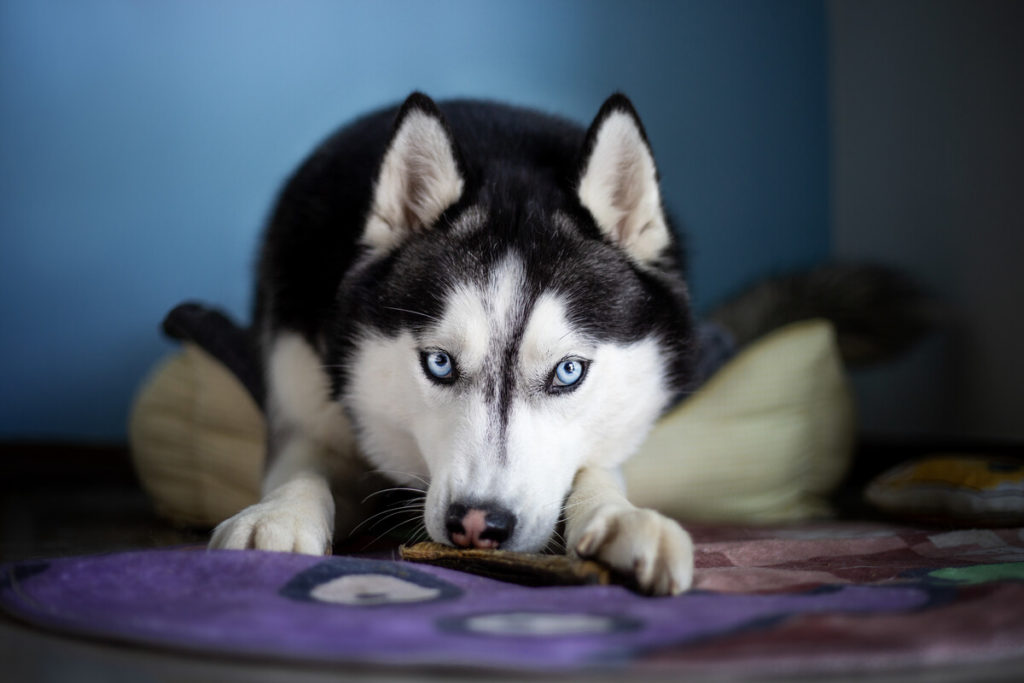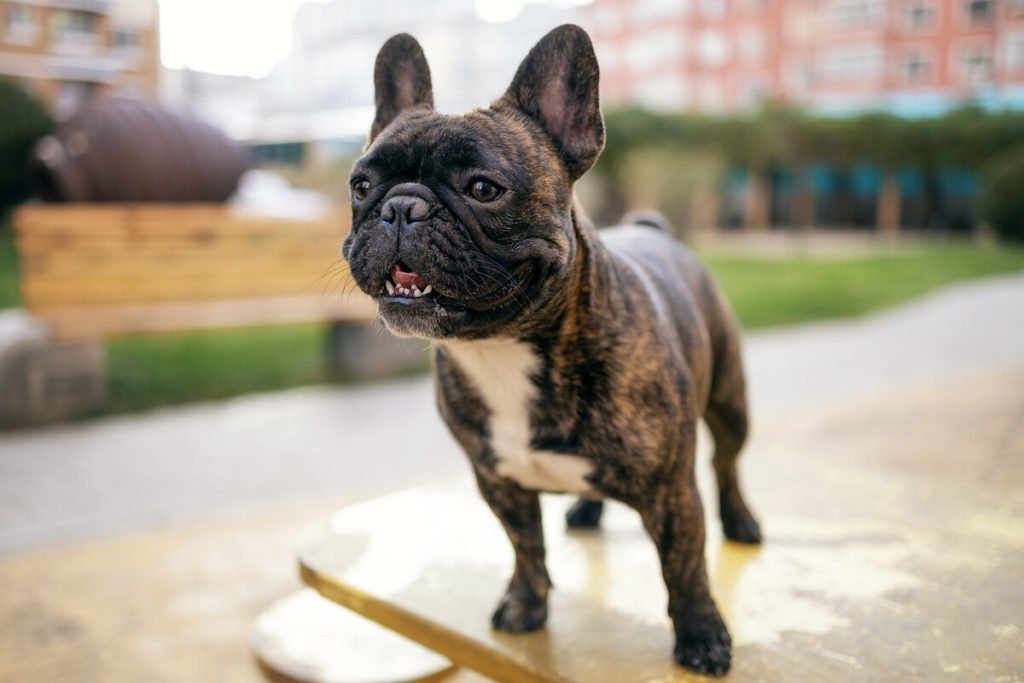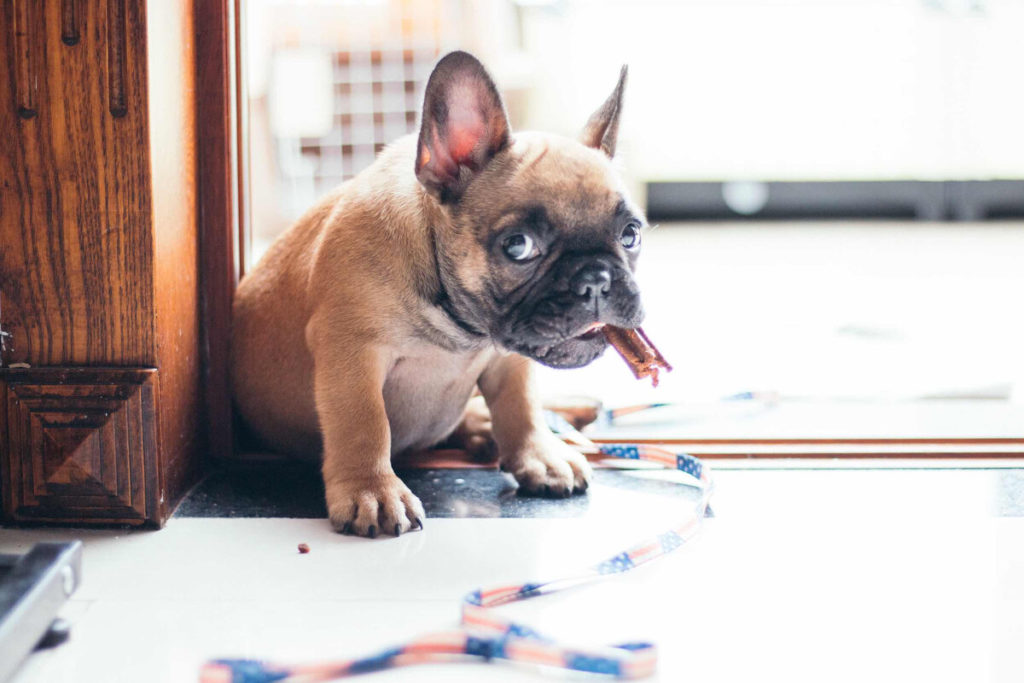Despite their size and gentle appearance, Siberian Huskies are an energetic breed. They require lots of daily exercise and plenty of human affection to keep them occupied throughout the day. Unfortunately, there are times where no matter what you do your Husky simply won’t settle down leading to frustration and sometimes sleepless nights. If exercise doesn’t work, then just how do you calm down a Husky?
Lucky for you, we’ve compiled our favourite tips to calm down a Husky that have been our saviours through the years. Whether it’s an over-excited puppy, a nervous Husky trying to hide, or simply one that refuses to chillout – we’ve got you covered!
What causes a Husky to become restless?
The methods we use to calm our Huskies down vary depending on the apparent reason for them being so energetic in the first place. It’s important to understand why your Husky isn’t settling down so you can help them in the right way. It can also help to identify any potential triggers that are causing your Husky to become restless so they can be avoided in the future.
Firstly, it should be noted that Huskies are inherently an energetic breed. They were bred to pull heavy cargo over long distances and as a result their stamina is very high. Huskies are not an easy breed to look after and whilst these tips have worked for us, a lot of patience is still required. This holds especially true for Husky puppies which is why we don’t recommend them to first time owners.

As Huskies get older, they usually become content with having one long walk a day although there can still be occasions where this simply isn’t enough. Restlessness can be caused by the simplest of things such as eating more or the ambient temperature around them being cooler than normal. The best thing you can do is make a note of when this behaviour occurs so you can keep track of potential triggers to be avoided.
Just like any breed, Huskies are prone to anxiety too. We’ve previously owned Huskies who are terrified of loud banging noises so you can imagine the struggle when fireworks are involved! These triggers are much more obvious but unfortunately they are often out of our control. Situations like this require different methods to calm our Huskies down to keep them feeling relaxed and at ease within the home.
How to calm a nervous Husky down
Struggling to calm down a nervous Husky? Don’t worry, we’ve been there too! Whether it’s fireworks, guns, thunderstorms or anything in between, dealing with your Husky’s anxiety is important to keep the trust you’ve formed in your bond. You may dread the thought of one of their triggers cropping up but lucky for you we’ve already tried every trick in the book. Keep reading to find out what has previously worked for us.
Weighted blanket
Weighted Lap Pad by HomeSmart – $$
In our experience, a nervous Husky will try to hide. This seems all well and good until you remember just how big Huskies are and how few places they can even fit. We’ve woken up many times to our Huskies trying to dig to get under our beds during a thunderstorm and all it leads to is more stress when they can’t get where they need to.
Hands down our go-to solution for this is a weighted blanket. It turns out Huskies can be pretty easily tricked and by covering their heads in a weighted blanked it’s as if they think no one can see them anymore. We’ve tried this with a normal blanket, but it seems the added pressure of a weighted blanket makes them feel more secure and they stay calmer for longer.
We love the 7lb Weighted Lap Pad from HomeSmart as it’s smaller and has a lighter weight than most weighted blankets and making it perfect for Huskies. The fabric is super soft to the point where we’re actually jealous of them using it, and the best part is that its machine washable so you can throw it in the washer when it starts to smell too much of dogs.
We’ve personally found that by just covering their heads they’ve still felt at ease, even with their noses poking out! We prefer this too as it prevents them from getting too warm and keeps fresh air circulating around their noses. If you find that you need to cover their entire bodies, make sure the room they are in is on the cooler side and offer them water frequently. You should keep your Husky supervised at all times whilst they are using a weighted blanket to ensure they are not overheating and to make sure they can leave if they want to.
How to calm an energetic Husky down
Huskies are a highly energetic breed and a firm hand is required to keep them from running around and chewing up the furniture 24/7. Even the most well-trained Huskies still have energy spurts every once in a while! Thankfully we’ve found a few toys that helped to keep our pups calm and occupied long enough for them to eventually tire out.
Treat-filled Chew Toys
Stuffable Extreme Dog Toy by KONG – $$
Our go-to for overly energetic Huskies is a treat-filled chew toy. Huskies are highly food orientated and love to play so nothing is more perfect for them than combining the two. These toys are essentially just chew toys with hollowed centres that can be filled with any treat of your choice. The toys make it difficult to get the treats back out again and have the added benefit of keeping your Husky occupied by themselves.
Our favourite is the Stuffable Extreme Dog Toy by KONG which can be customised to suit any dog. For pretty obvious reasons we use the XXL size toy in the ‘extreme’ strength and we’ve had good success with it. The toys are definitely not indestructible as they claim to be, but they’ve survived longer than others we’ve tried and we usually get a good couple of months out of them before our Huskies manage to tear them apart.
We personally like to fill them with a spoonful of peanut butter and try to smear it around to coat the inside of the toy. In our experience using a paste rather than a solid treat keeps our Huskies invested for longer. We should note that it’s important to still use discipline when you are giving these toys to your Husky. We suggest showing the toy to your Husky and make them sit for a couple of minutes or perform a few of their known tricks before handing it over to them. This way they will begin to associate being rewarded with good behaviour rather than with the energetic behaviours you are trying to stop.
Rawhide Chews
Large Rawhide Rolls 3 Pack by Pet Magasin – $
Another personal favourite of ours is to give our Huskies a rawhide chew. These are very long-lasting dog treats made up of dried beef rawhide that take a long time to be eaten. Our Huskies love rawhide chews and would happily chomp on one all day if they could. Our Huskies even seem to be more well behaved on purpose just so we will give them one! Rawhide chews can be very hit-or-miss in terms of quality and cheaper chews tend to break apart posing a choking risk to your dog.
Our go-to has been the Large Rawhide Rolls from Pet Magasin which come in a pack of three. These are on the more expensive side but it is more than worth it to know you’re getting a quality product for your Husky. Pet Magasin claim the chews promote better oral hygiene and are ‘treated to eliminate bacteria without adding any preservatives’ so you know you’re not rewarding them with anything harmful.
One of these treats usually lasts us up to a week and we allow our Huskies to have access to them for only an hour or two a day. In the same way as with the chew toys, we recommend you show the treat to your Husky and make them behave well for five minutes before giving it to them. This way you still retain some control over their feeding times and they will begin to associate treats with calm behaviour.
Final Thoughts
There are many products available that claim to calm your dogs down but these are our tried and trusted methods that have saved us from several sleepless nights. It’s important to remember that whilst having a relaxed pup is nice, Huskies are an energetic breed and dealing with their outbursts is simply part of the job. No matter how annoying they can be sometimes, we still love them all the same.







